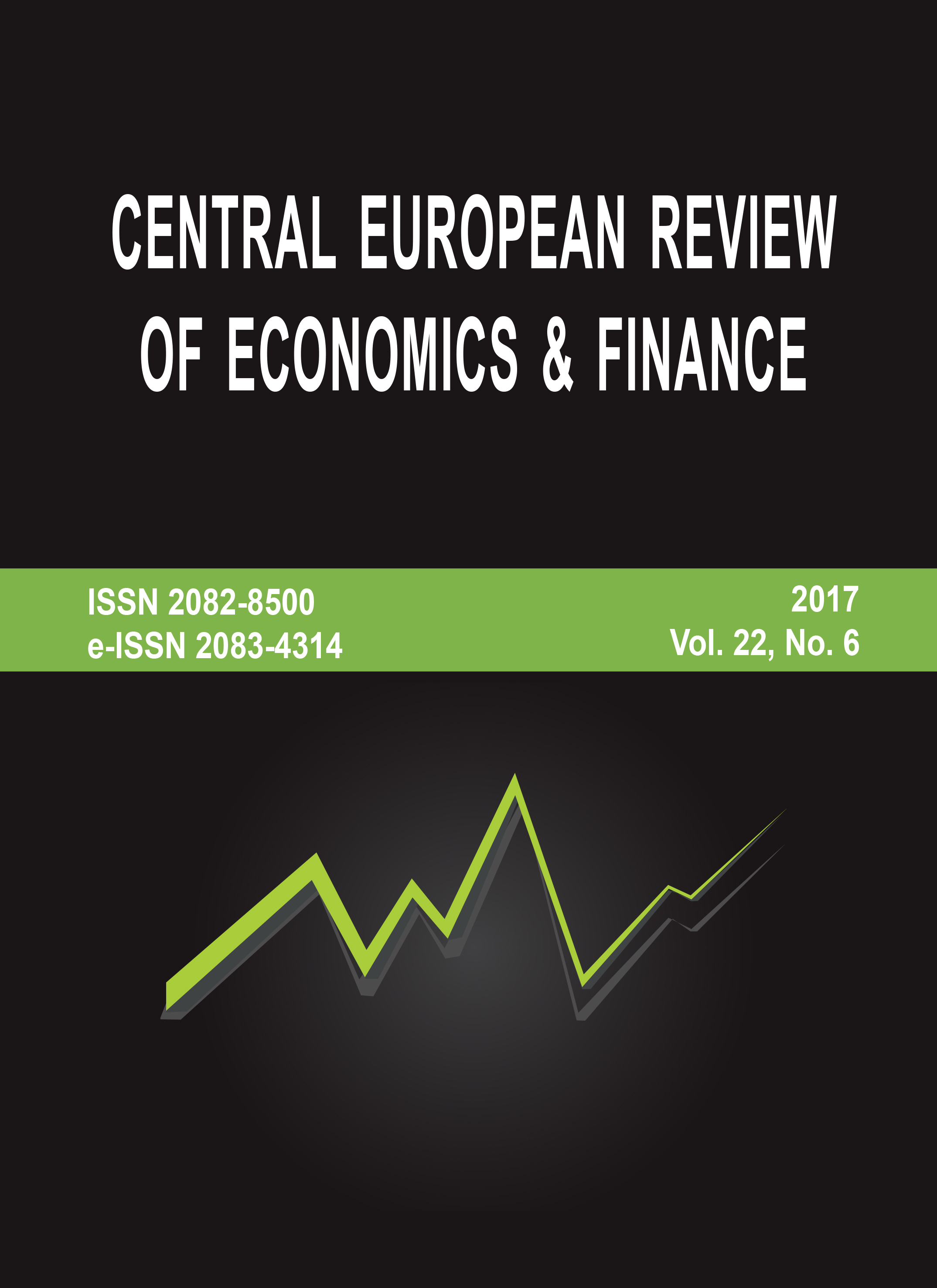Human capital as the growth factor in regional competitiveness
DOI:
https://doi.org/10.24136/ceref.2017.027Keywords:
human capital, regional competitiveness, regional development, method of least squaresAbstract
In the recent years, the world economy has undergone an enormous transformation. It can be noted that it is not only based on industry, but also on knowledge. Achieving a competitive advantage by regions is further focused on investing in fixed assets, but, what is also important, in human capital. At present, a factor that is increasingly important in achieving competitiveness is the ability to use intangible resources. Expenditures on education and research, investing in people, their knowledge and skills are an essential precondition of raising competitiveness. In the case of a highly qualified staff, it allows the efficient introduction of new technologies and the creation of new directions for its development. The competitiveness of the regions is influenced, inter alia, by human talents, knowledge, entrepreneurship, initiative and own resources to improve living conditions. Human capital is thus a key determinant of the competitiveness of regions in Poland. Therefore, the priority of this article is to analyze the impact of selected components of human capital on the competitiveness of regions in Poland in the years 2007-2014. The article is both theoretical and empirical. The first part reviews the literature closely related to the topic of the work. The second part includes a statistical analysis and a construction of a panel model estimated by the method of least squares. GRETL program was used for calculations.
- Imię autora*:
Downloads
References
Bank Danych Lokalnych, www.bdl.stat.gov.pl [dostęp 23.06.2017]
Bartnik, K. M. (2016). Znaczenie kapitału ludzkiego i społecznego w rozwoju regionalnym na przykładzie Finlandii. Studia Oeconomica Posnaniensia, 4(6), 8.
Brożek, K., Kogut, J. (2016). Econometric analysis of selected factors of innovative companies activity in the polish economy. Central European Review of Economics & Finance, Vol. 16, No. 6, 49-50.
Brożek, K., Kogut, J. (2017). Ekonometryczna analiza zarządzania działalnością B+R w polskich przedsiębiorstwach.Edukacja Ekonomistów i Menedżerów. Problemy, innowacje, projekty, 2(44), 150-151.
Butkiewicz-Schodowska, A. (2015). Kapitał ludzki we współczesnym zarządzaniu przedsiębiorstwami, Zeszyty Naukowe nr 858, Współczesne Problemy Ekonomiczne nr 11, 117.
Dyr, T., Ziółkowska, K. (2017). The intellectual capital as the regions? competitiveness factor, Central European Review of Economics & Finance, Vol. 17, No. 1, 34-35.
Edvinnson, L., Malone, M.S. (2001). Kapitał intelektualny, Warszawa: PWN, 39.
Gojewska, A. (2012). Kapitał ludzki, innowacje i instytucje a konkurencyjność regionów Europy Środkowej i Wschodniej, Warszawa:Centrum Europejskie Natolin, zeszyt 49, 6, 29-30.
Juchnowicz, M. (2004). Kapitał ludzki a kształtowanie przedsiębiorczości, Warszawa: Poltex, 69.
Król, H., Ludwiczyński, A. (2006). Zarządzanie zasobami ludzkimi. Tworzenie kapitału ludzkiego organizacji, Warszawa: PWN, 116-117.
Kufel, T. (2013). Ekonometria. Rozwiązywanie problemów z wykorzystaniem programu GRETL, Wydanie trzecie, zmienione, Warszawa: Wydawnictwo Naukowe PWN, 172-173.
Marakova, V., Dyr., T., Wolak-Tuzimek, A. (2016). Factors tourism?s competitiveness in the European Union countries, E&M Ekonomie a Management, 19(3), 92-93.
Miciuła, I., Miciuła, K. (2015). Metody pomiaru wartości kapitału ludzkiego.Zeszyty Naukowe nr 858, Współczesne Problemy Ekonomiczne nr 11, 272.
Samul, J. (2012). Pojęcie kapitału ludzkiego w opinii menedżerów personalnych, Zarządzanie i Finanse, 10, 2(1), 193, 195.
Samul, J. (2013). Definicje kapitału ludzkiego w ujęciu porównawczym, Zeszyty Naukowe Uniwersytetu Przyrodniczo-Humanistycznego w Siedlcach, Seria: Administracja i Zarządzanie, nr 96, 195-196.
Tomaszewska, A. (2010). Kapitał ludzki i aktywność zawodowa a konkurencyjność regionów. Możliwości wsparcia w ramach Programu Operacyjnego Kapitał Ludzki 2007-2013, Studia i Materiały. Miscellanea Oeconomicae, 14(1), 187.



